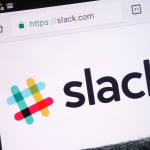Taking a ‘buyer persona’ approach to staff communications

Sitting somewhere between the age of 23 and 38 this year, millennials form a powerful part of today’s workforce.
This group will account for more than a third of our global staff rosters by 2020, but while they are now the most common demographic of worker, research carried out by Speakap finds they are also some of the most challenging to engage.
Based on a survey of 250 HR professionals in the US and UK, the report entitled Technology’s Role in Managing & Retaining Employees, said that millennials represented a “double-edged sword” when it came to recruitment.
For just shy of one half (48 percent) of businesses, millennials make up the majority of ‘non-desk’ workers, or those not based permanently in the office, such as sales reps, delivery drivers, front-line staff and warehouse workers.
At the same time, however, just under a third (32 percent) said millennials were some of the hardest to engage— more so than Gen Z, Gen X or baby boomers.
Keeping staff connected— to the tools and information they need, each other and the business is a whole— is vital to the smooth operation of a business but millennials require employers to think differently about their approach to communication.
Meaningful experiences
As a generation, millennials value meaningful experiences over products, says Speakap. They are more idealistic than pragmatic and are continuously on the search for personal fulfillment, rather than ‘just another job’.
Meanwhile, their tolerance for subpar experiences extends beyond just the customer experience delivered by brands they use, but for the ‘employee experience’ delivered by their employers.
According to Erwin Van Der Vlist, Co-Founder & CEO of Speakap, there are specific ways companies can better communicate and engage with these younger generations of employees.
“First and foremost, companies should tap into millennials’ intrinsic desire for personal fulfillment and a sense of purpose,” said Van Der Vlist.
A social media model
One way to do this is by taking advantage of the socially-intuitive experience and user interface provided by enterprise social networks and use these platforms for ongoing learning and development.
One such example is Facebook’s corporate version of its platform Workplace, which gives companies the functionality to live stream, run poll, schedule events and deploy chatbots.
It’s used by brands including Telefonica, Nestle, Starbucks, and Walmart, but is increasingly targeting smaller businesses.
A recent survey by Wire, meanwhile, found 92 percent of businesses executives agreed that collaboration tools— such as itself and Slack— are the best communications solutions to offer employees, owed to their flexibility over ‘traditional’ methods such as email.
Taking this approach “will help your millennial workforce not only improve their job-related skills, productivity and performance,” said Van Der Vlist, “but it will also make them feel personally fulfilled in their roles and more satisfied with the company.”
Companies are certainly moving in the right direction; the report found that 16 to 45 percent of their total HR budget is allotted to technology designed for internal/employee communications.
Long-term engagement
The risk of not keeping employees engaged in a workforce dominated by millennials, and increasingly Generation Z, is obvious. Three-quarters of HR professionals said they now experience an average turnover rate of 30 percent a year.
Meanwhile, 15 percent of respondents said their employees only stay for a duration of 1-2 years, while another 8 percent said the average duration of employment for their workers is less than one year.
YOU MIGHT LIKE

Brace for the new-wave workforce: The Gen Z
Reducing staff turnover— or “keeping employees engaged long term”— was therefore cited as an increasingly-pressing priority, particularly for Gen Z workers (18 percent).
“A key takeaway from our research study is that HR departments should modify their employee communications based on the demographics of their employees,” said Van Der Vlist.
“Given that millennials, Gen Z and baby boomers all have different tech skills, mobile adoption rates and expectations for the employee experience, this should be a no-brainer.”
Ultimately, Van Der Vlist suggests companies apply a ‘buyer persona’ approach to their HR communications to understand where and how their employees are searching for information, what content they’re consuming and what has the most influence in persuading them to take action.
“This will prove tremendously valuable if organizations – and their HR departments – want to make a meaningful connection with these workers and keep them engaged long-term,” he said.









